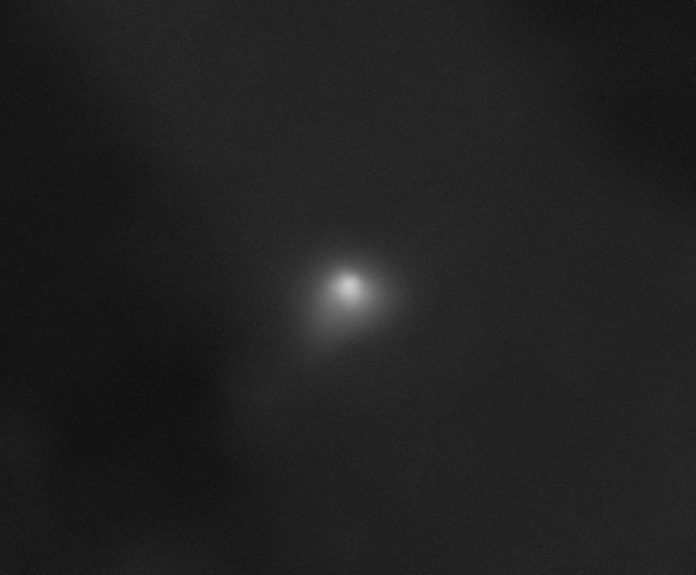The universe just delivered another incredible surprise. A new visitor from beyond our solar system, the interstellar comet 3I ATLAS, has been captured in fresh images by multiple NASA Mars missions. This rare event has excited scientists, astronomers, and space lovers around the world. It is not every day that a comet from another star system passes through ours, and it is even rarer to photograph it from the surface and orbit of Mars.
In this article, you will learn everything about the interstellar comet 3I ATLAS, including its journey, composition, NASA’s new images, what makes it different from other comets, and what its discovery means for the future of space exploration.
Also Read: Jeff Bezos Launches $6.2B AI Startup ‘Project Prometheus’ in Major Industry Shake-Up
Before we dive deeper, here is a quick guide to help you navigate.
1. What is the Interstellar Comet 3I ATLAS
The interstellar comet 3I ATLAS is the third confirmed object from outside our solar system to visit us. The name tells us several things:
-
3I means it is the third confirmed “Interstellar Object”
-
ATLAS is the telescope survey that discovered it
-
It is a comet meaning it has ice, dust, gas, and forms a glowing coma when close to a star
This comet came from deep interstellar space, likely formed around another star billions of years ago. Its arrival gives scientists a chance to study material from another planetary system without leaving our own.
2. How 3I ATLAS Was Discovered
The comet was first detected on July 1, 2025, by the ATLAS telescope in Chile. At first it appeared to be a bright but ordinary comet. However, when astronomers calculated its orbit, they quickly realized something unusual. Its path was hyperbolic, meaning it was not gravitationally bound to the Sun. It came from outside our solar system and would leave it again.
With that confirmation, the comet received the designation 3I, becoming part of a very exclusive group of visitors.
3. Why 3I ATLAS Is Called an Interstellar Comet
Most comets originate from the Oort Cloud or Kuiper Belt, regions filled with icy objects orbiting the Sun.
But 3I ATLAS:
-
Travels far too fast to be controlled by the Sun’s gravity
-
Has a hyperbolic orbit curve
-
Approached from outside the plane where most solar system objects travel
This proves it came from an entirely different star system. Scientists believe it began its journey around 8 to 10 billion years ago, making it older than our Sun and planets.
4. NASA Mars Missions That Captured New Images
NASA took the opportunity to turn several Mars missions toward 3I ATLAS as it passed relatively close to Mars. These missions captured some of the clearest pictures ever taken of an interstellar object.
The missions include:
• Mars Reconnaissance Orbiter (MRO)
Its HiRISE camera captured a detailed image showing the comet’s bright coma and inner dust cloud.
• MAVEN
Used ultraviolet imaging to track hydrogen released as the comet’s ice evaporated.
• Perseverance Rover
From the surface of Mars, Perseverance photographed the comet as a faint moving smudge in the Martian sky.
Together, these images give scientists multiple viewing angles rarely possible for interstellar objects.
5. What the New Images Reveal
The images show 3I ATLAS with:
-
A bright central core
-
A wide, hazy coma
-
A tail structure influenced by solar radiation
-
Evaporating gases glowing under sunlight
The most impressive part of these images is the perspective. Instead of Earth based telescopes alone, we now have images from Mars orbit and even the Mars surface, giving us a truly unique 3D understanding of the comet’s structure.
6. The Chemical Makeup of 3I ATLAS
NASA and other observatories found that the interstellar comet 3I ATLAS contains:
-
Water vapor
-
Carbon dioxide
-
Carbon monoxide
-
Cyanide gas
-
Nickel based compounds
Interestingly, these elements are similar to comets in our own solar system. This suggests that planetary systems across the galaxy may form from similar basic ingredients.
7. Its Speed, Size, and Path Through the Solar System
The interstellar comet 3I ATLAS is racing through space at about 130000 miles per hour. That speed is far higher than any ordinary comet because it is not trapped by the Sun’s gravity.
Estimates put its size between 0.4 and 5.6 kilometers wide.
Key points in its journey:
-
September to October 2025: Passed near Mars
-
December 2025: Makes its closest approach to Earth
-
2026: Leaves the solar system forever
For observers on Earth, the comet appears as a faint, fuzzy spot through binoculars or small telescopes.
8. Why Scientists Are Excited About 3I ATLAS
There are many reasons this comet has become a major scientific event.
• It is only the third interstellar object ever seen
This makes it extremely rare.
• It lets us study the building blocks of another solar system
Its composition gives clues about how planets form elsewhere in the galaxy.
• It allows testing of worldwide observation systems
Multiple spacecraft, telescopes, and rovers coordinated together, proving space agencies can respond quickly to fast moving space visitors.
• It helps compare differences between solar and interstellar comets
We can learn why some objects are more comet-like while others, like ‘Oumuamua, are strange and unfamiliar.
9. How This Comet Compares to ‘Oumuamua and Borisov
1I/’Oumuamua (2017)
-
First known interstellar object
-
No visible coma
-
Odd cigar or pancake shape
-
Sparked debates about its nature
2I/Borisov (2019)
-
First confirmed interstellar comet
-
Looks more like a typical comet
-
Released gas and dust similar to solar system comets
3I ATLAS (2025)
-
Behaves like a classic comet
-
Has a clear coma and tail
-
Rich chemical signatures
-
Imaged by multiple spacecraft near Mars
This progression helps scientists understand the variety of interstellar objects passing through our region of space.
10. What Happens After 3I ATLAS Leaves the Solar System
Once the interstellar comet 3I ATLAS completes its journey through our solar system, it will continue back into deep space. It will not return. Its path sends it toward the outer edges of the galaxy. It may drift for billions of years until it encounters another star system or fades into the darkness of interstellar space.
Frequently Asked Questions
Can you see 3I ATLAS from Earth
Yes, but only with a telescope or strong binoculars under dark skies.
Is 3I ATLAS dangerous
No. It will never come close enough to Earth to pose any risk.
Why is it important
It allows scientists to study material from another star system without sending a spacecraft there.
Could it be artificial
No. Research confirms it behaves exactly like a natural comet.
Final Thoughts
The arrival of the interstellar comet 3I ATLAS is a powerful reminder of how dynamic and connected our galaxy truly is. Every so often, cosmic travelers like this comet pass through our neighborhood, carrying secrets from distant star systems. Thanks to NASA’s Mars missions, we now have clearer images and richer data than ever before.
As technology improves and telescope surveys become more sensitive, we will likely spot more interstellar visitors in the coming decades. Each one will offer new clues about how other planetary systems form and evolve.
For now, 3I ATLAS remains one of the most exciting space stories of 2025 and 2026.
External Link Suggestions









